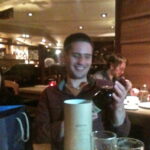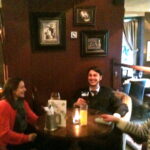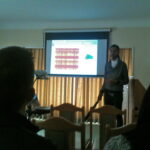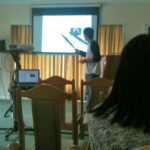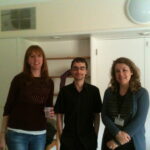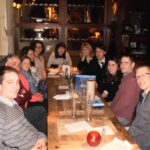Last Friday we had what they called a ‘retreat’, a day out to get a view of what we all do in the lab. It is true that there are lab meetings but one of these events allows us to get a global view of the activities of the group. Given our interest in heterogeneities, it is not surprising that we are a number of variations on a theme: how cells make decisions and how we can bridge this at several scales. We also are pleased to have a number of important collaborations and contributions from outside the lab, which were much in evidence during the day.
It all started with Christoph Budjan (working jointly with Emma Rawlins and us) who made a lucid and clear discussion of what is the role of signals in development beyond the classical linear view suggested by Genetics. This was followed by two talks by David Turner (the onset of Brachyury in cultured ES cells) and Christian Schroeter (decision making in the Primitive Endoderm/Epiblast lineages) who made explicitly clear how quantifications of cell fate decision processes leads to interesting insights into the mechanisms underlying the events (and sometimes these are not obvious). We then entered a more biochemical theme with our collaborators (Claire Mulvey and Andy Christophorou) from the proteomics group led by Kathryn Lilley, showing us the beauties and promise of proteomics as applied to ES cells and Penny Hayward discussed her progress on the long treck to understand the role of ß-catenin in pluripotency and the exit from pluripotency.
On either side of a great lunch we heard two of our theoreticians discussing fine grained (Peyman Gifani) and coarse grained (Pedro Machado) approaches to infer rules and networks involved in decision making in ES cells. It was interesting to get a fresh view of notions that have been around for a while. With increasing amounts of information from single cells, these kind of approaches which use hybrids of statistical mechanics, population biology and bioinformatics, become increasingly significant and influential. And with these talks we looked at the home straight in which Joaquin de Navascues gave us an account of how a classical developmental geneticist from Madrid has been transformed into a cell population biologist. He aso discussed his plans for the forthcoming move to Cardiff to work in the European Cancer Stem Cell Institute led by Alan Clark (https://www.cardiff.ac.uk/research/cancerstemcell/people/). Cassie Yu Bian presented us some exciting and insightful data on Notch signalling in the intestinal stem cells of the gut which challenges everything that is published on the subject. The reason being that it is quantitative dynamic data.
The day was capped with a guest talk from Tristan Rodriguez (Imperial College, London: https://www1.imperial.ac.uk/medicine/people/tristan.rodriguez/) who discussed his recent results on cell competition in the early mouse embryo under the title “Surviving pluripotency, who picks who will live and who will dieâ€.
The day was a bit warmer than it has been and we could see (and feel) all seasons through a very nice set of glass windows on the side of the room. The venue was wonderful and Clare Hall did a great job. We want to thank Sung Ly for organizing everything. We ended up, as it is customary on these occasions, going to the pub and later to dinner. This was, however, not a normal occasion as we said Good Bye to Jamie Trott, who having finished his PhD with us is moving to Singapore where he will be working in the group of Ray Dunn (https://www.imb.a-star.edu.sg/php/rd-biography.php). Jamie leaves much behind and will be missed, We still have much to wrap up concerning his work in single cell transcriptomics during differentiation (you will hear more about this soon).


